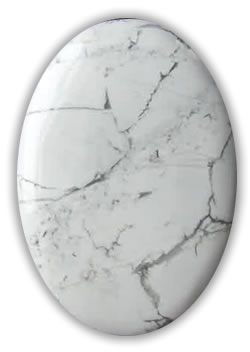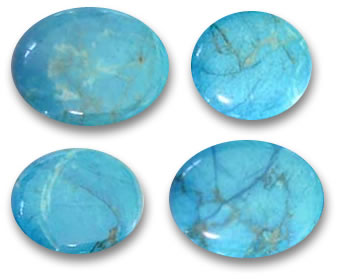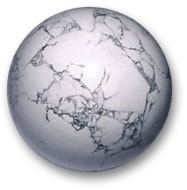Your Details
Your Details
|
Reviewed By Andreas Zabczyk
Howlite Gemstones
Natural Howlite
Howlite is a striking gemstone known for its calming energy and beautiful appearance, often mistaken for turquoise due to its similar color and veining. This stone has a rich history and is widely admired for its soothing properties. In this article, we will explore the howlite stone meaning, its benefits, proporties and its mining locations. Explore our wide range of howlite gemstones for sale. By chemical composition, howlite is calcium borosilicate hydroxide. It was first discovered at Tick Canyon in Southern California in 1868. It was named after Henry How (1828-1879), a Canadian mineralogist who first described it. Howlite stone is typically white or grayish-white with fine grey, black or brown veins, often in a web-like pattern. It is opaque with a sub-vitreous luster sometimes described as porcelaneous. Its crystal structure is monoclinic and it has a hardness of 3.5 on the Mohs scale. Howlite has a refractive indes of 1.583 to 1.600 and a specific gravity of 2.53 to 2.59. It has no cleavage. It is usually found in borax deposits in the desert clays of California. 
Dyed Howlite
Since howlite is fairly porous, it can be easily dyed to imitate other minerals. Due to the distinctive veining, howlite dyed a blue color makes a fairly convincing turquoise simulant. However, howlite is a much softer stone than turquoise (the hardness of turquoise is 5 to 6, wheras howlite's is only 3.5). Therefore, it can be identified from such inauthentic turquoise. Howlite has also been dyed deep-blue to simulate lapis lazuli, or red to imitate coral. White howlite is also sold in its natural state, sometimes under the misleading trade names of "white turquoise" or "white buffalo turquoise", or the derived name "white buffalo stone". 
Natural Howlite Sphere
Howlite is often carved to produce decorative objects. It is a fairly inexpensive material and large nodules resembling cauliflower heads have been found in California in pieces as large as 50 kilograms. Though howlite has also been found in Nova Scotia in Canada, most of the material on the market comes from sites in Los Angeles and San Bernardino counties in California. |
